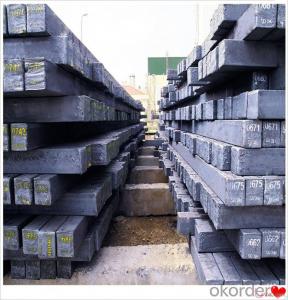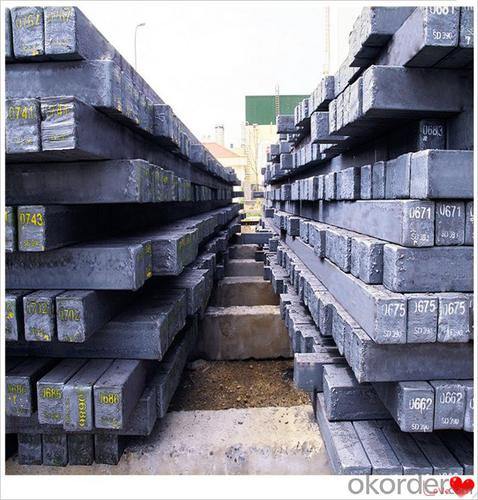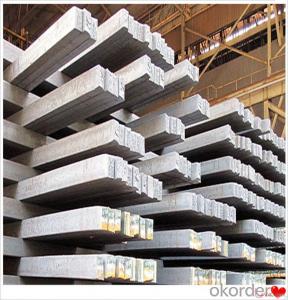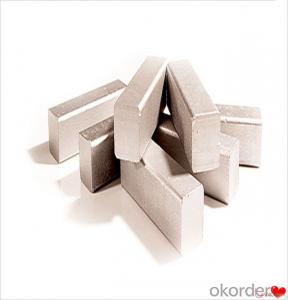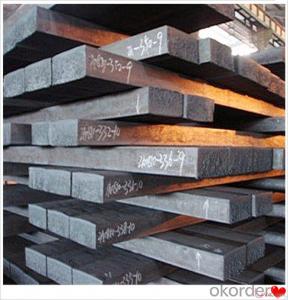Chrome Alloy Steel Q235,Q255,Q275,Q345,3SP,5SP,20MnSi Made in China
- Loading Port:
- China main port
- Payment Terms:
- TT OR LC
- Min Order Qty:
- 20 m.t.
- Supply Capability:
- 200000 m.t./month
OKorder Service Pledge
OKorder Financial Service
You Might Also Like
Chrome Alloy Steel Q235,Q255,Q275,Q345,3SP,5SP,20MnSi Made in China
Specification
Steel billet(ingot) by cogging or breakdown of semi-finished products, is the raw material of all kinds of steel mill. Billet section of square, round, flat, rectangular and abnormity of several kinds of, mainly related to the shape of rolled products.
CNBM Q235,Q275,Q345,3SP,5SP,20MnSi Billets Steel
Hot Rolled Steel Billets/ Mild Steel Bar/ Billet Steel
Specification (see below)
Standard: GB/JIS/ASTM
Size: 50*50mm-180*180mm
Length: 3-12mtrs or Customised
Steel material: Q235,Q255,Q275,Q345,3SP,5SP,20MnSi
Technique: Hot rolled
FOB Unit Ton Price $250-350 and Usually I will quote you CFR price.
MOQ: Usually 1000-10000MT/size
Shipment:By Container,Bulk Vessel
Packaging Details: bundles with steel strips or as customers's requirements
Delivery time: Usually within 30 days after the deposit/LC
Inspection:Third party inspection before loading.
Technical data
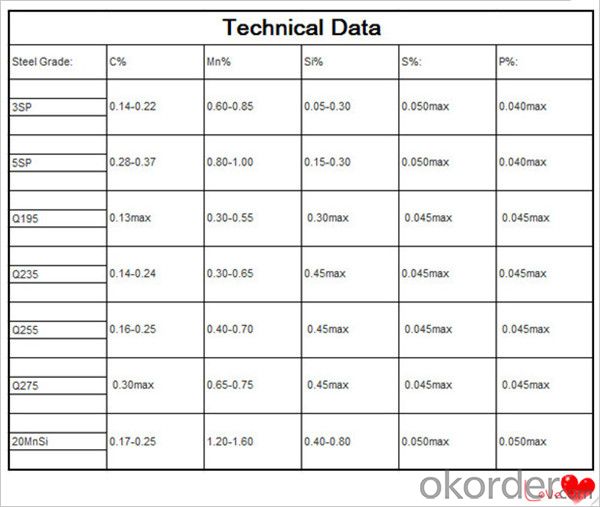
Feature Steel Billet
Rectangular billet continuous casting billet and mainly general carbon steel, low carbon low silicon cold-rolled material, high quality carbon structural steel, high strength low alloy steel, special steel, etc.
The billet is mainly divided into two kinds from the shape:
Slab: cross section width and height of the ratio of the larger, mainly used for rolling plate.
Billet: equal cross section width and height, or a huge difference, mainly used for rolling steel, wire rod. ,
Steel billets have distinct characteristics as compared with already furnished steel bars and products. Billets have a specific grain structure, which enables the metal to be processed more intricately. Steel billets are also known for their malleability and ductility, especially when exposed to varying temperatures during shaping and molding.
Packaging & Shipping
1. Packaging:
1) Small size: in bundles
2)Big size: in bulk
3)in plastic packing or as per customer requirement
2. Delivery time:
1) Normal size: within 7days send from warehouse directly
2) Special size: with 25-30days customer made for you
3. Trade terms:FOB/CFR/CIF
4. Shippment:
1) length:≤5.8m loaded in 20FT Container with 25-27tons
2) length:≤11.8m loaded in 40FT Container with 25-27tons
3) lengnth:≥12m shipped by bulk vessel, FILO terms
Steel Billet Images
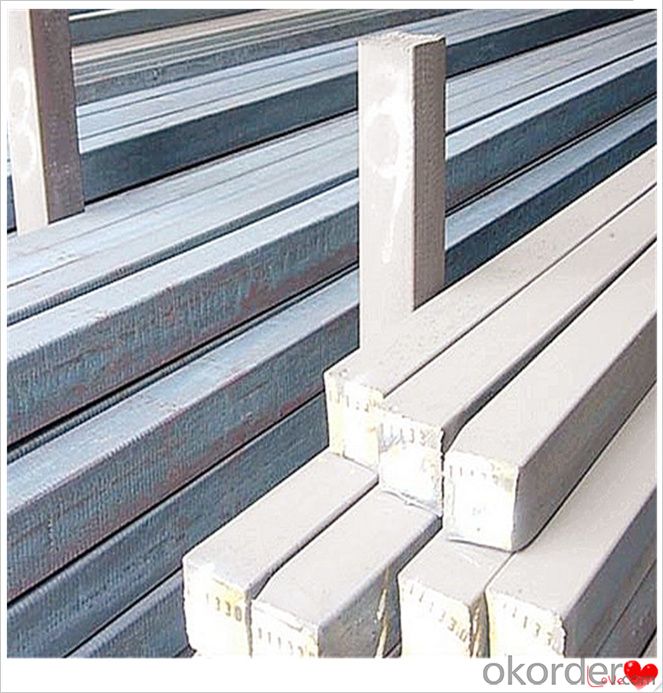
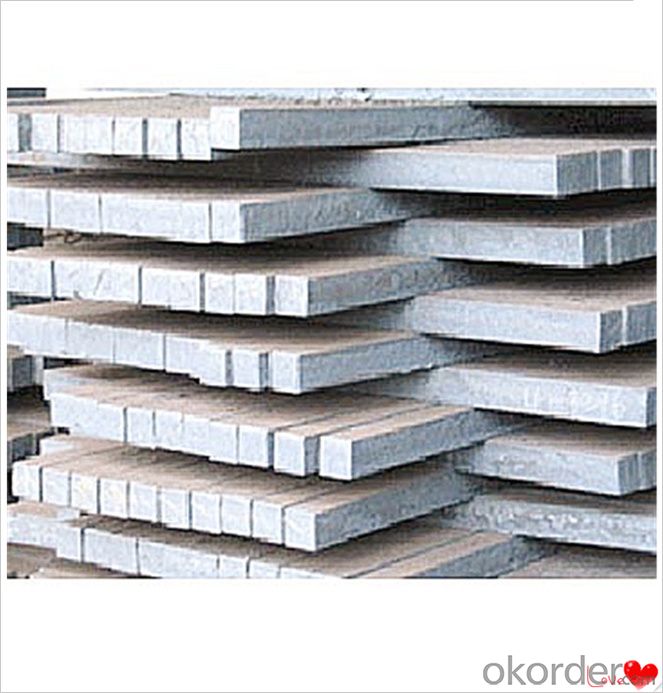
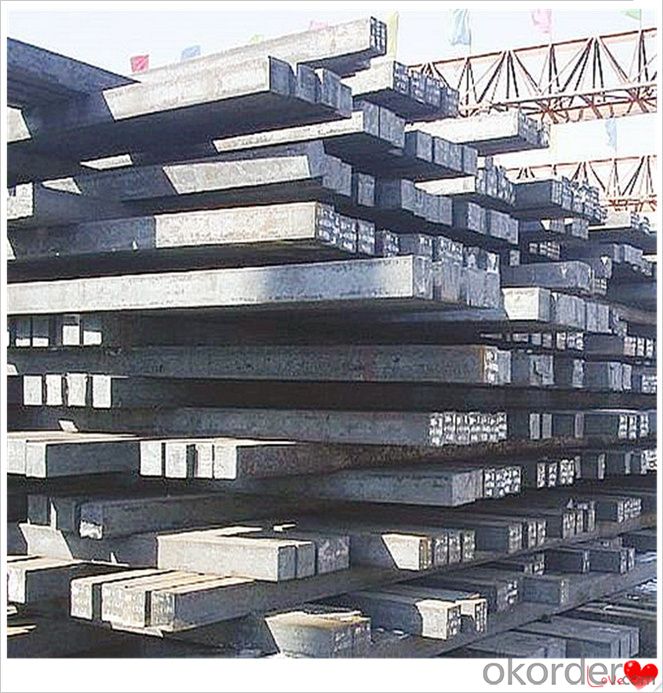
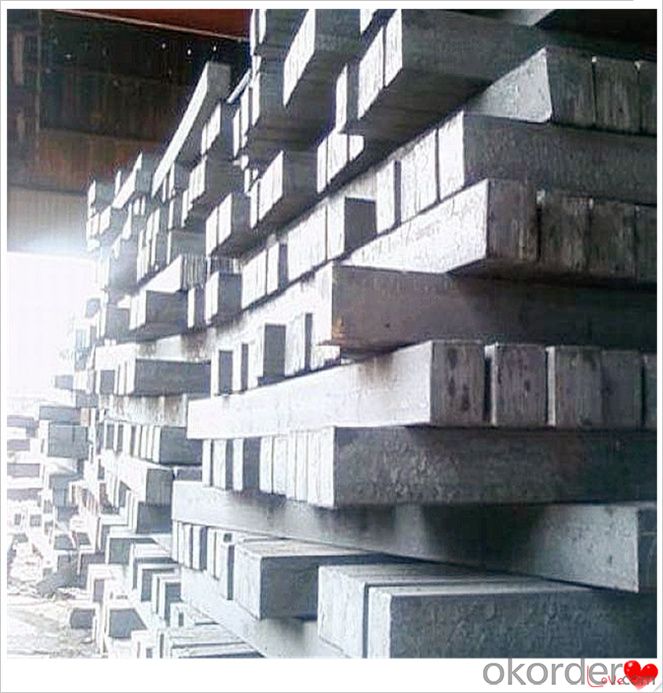
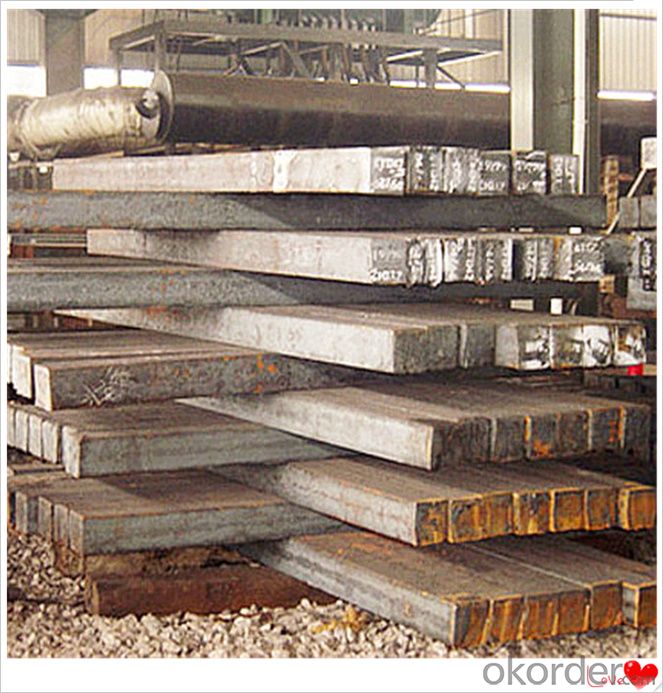
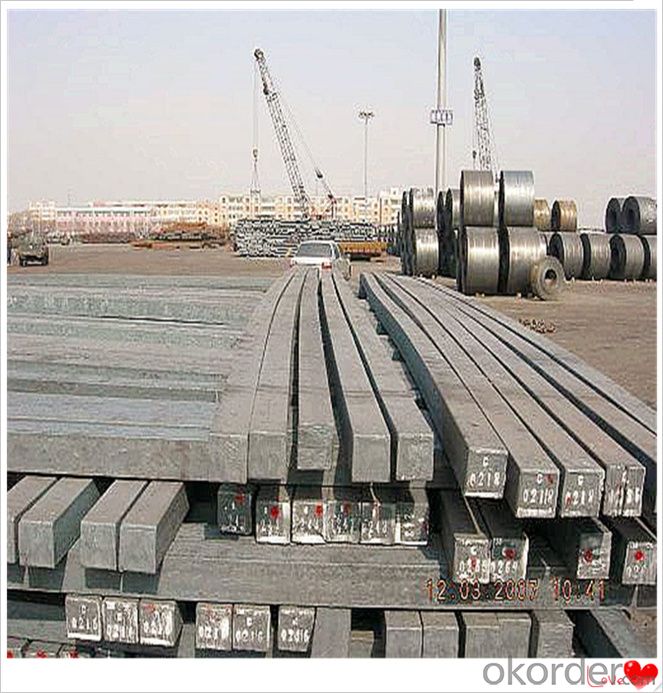
Processing
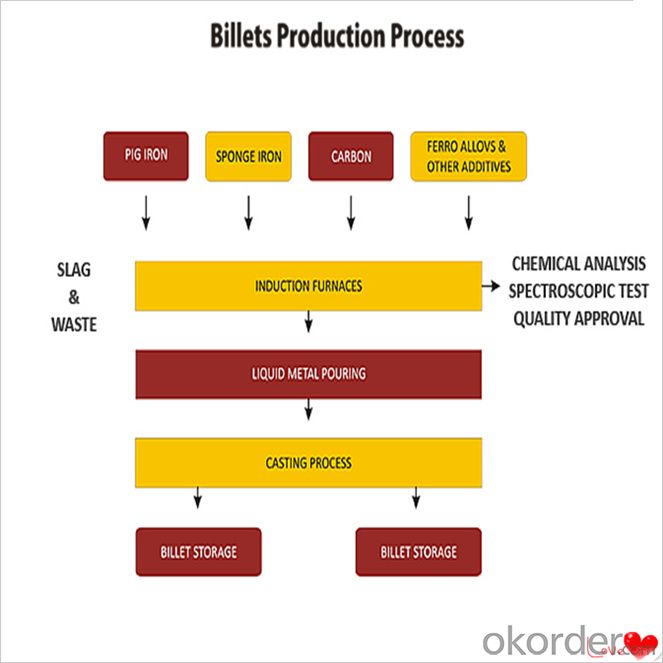
Usage-Billet Steel
Used for the plant, the bridge,shipment building high-rise building construction,lifting and transportation machinery, equipment manufracturing base building the support foundation pile manufacturing.
Billets, or ingots (as they sometimes referred to), are not of practical use until they have been formed into more functional shapes and sizes. While they have already been put in the furnace, they still require a series of shaping and molding procedures such as hot and cold working, milling and cutting before they are sold in hardware stores, or used for different applications. The unformed billets, however, can be used in striking currency such as coins and as reserves, similar to gold bars.
FAQ-Billet Steel
We have organized several common questions for our clients,may help you sincerely:
1) How about your company?
A world class manufacturer & supplier of castings forging in carbon steel and alloy steel,is one of the large-scale professional investment casting production bases in China,consisting of both casting foundry forging and machining factory. Annually more than 8000 tons Precision casting and forging parts are exported to markets in Europe,America and Japan. OEM casting and forging service available according to customer’s requirements.
2) How to guarantee the quality of the products?
We have established the international advanced quality management system,every link from raw material to final product we have strict quality test;We resolutely put an end to unqualified products flowing into the market. At the same time, we will provide necessary follow-up service assurance.
3) How long can we receive the product after purchase?
In the purchase of product within three working days, We will arrange the factory delivery as soon as possible. The pecific time of receiving is related to the state and position of customers.Commonly 7 to 10 working days can be served.
4)Do you have your own QC department?
Yes, we have, our QC department will inspect the goods during the process of mass production and after completion of production.
hot sale!!! Cast Steel Grades/ mild steel bar/ billet steel
(1): High quality steel with reasonable price.
(2): Wide excellent experiences with after-sale service.
(3): Every process will be checked by responsible QC which insures every product's quality.
(4): Professional packing teams which keep every packing safely.
(5): Trial order can be done in one week.
(6): Samples can be provided as your requirements.
- Q: How are steel billets used in the manufacturing of valves and fittings?
- Steel billets are used in the manufacturing of valves and fittings as the starting material. These billets are heated and then mechanically or forge pressed to shape them into the desired valve or fitting component. The billets provide the necessary strength and durability required for these critical components in various industries.
- Q: What are the main types of defects found in steel billets?
- The main types of defects found in steel billets are surface defects, internal defects, and segregations. Surface defects refer to any irregularities, cracks, or discontinuities present on the outer surface of the steel billet. These defects can include scale, scratches, pits, and surface cracks. Surface defects can be caused by improper handling during transportation or storage, improper handling during the manufacturing process, or inadequate surface cleaning. Internal defects are flaws or imperfections that occur within the inner structure of the steel billet. These defects can include inclusions, cavities, blowholes, porosity, and non-metallic inclusions. Internal defects can be caused by improper melting and casting processes, improper cooling and solidification, or the presence of impurities in the steel. Segregations refer to the non-uniform distribution of elements or impurities within the steel billet. This can result in areas of the billet having different chemical compositions or mechanical properties. Segregations can be caused by inadequate mixing during the melting process, improper pouring and solidification, or the presence of impurities in the raw materials. Detecting and removing these defects is crucial to ensure the quality and integrity of steel billets. Various non-destructive testing techniques such as visual inspection, ultrasonic testing, magnetic particle testing, and eddy current testing are used to identify and characterize these defects. Once detected, appropriate measures such as grinding, machining, or heat treatment can be employed to remove or mitigate the defects.
- Q: How are steel billets used in the manufacturing of railway wagons?
- Steel billets are used in the manufacturing of railway wagons as they serve as the raw material for various components such as frames, side panels, and undercarriages. These billets are first heated and then shaped into the desired form through processes like rolling or forging. The resulting components are strong, durable, and able to withstand the rigorous demands of railway transportation, ensuring the safety and reliability of the wagons.
- Q: How do steel billets contribute to the manufacturing of kitchen appliances?
- Steel billets are used as raw materials in the manufacturing of kitchen appliances because of their excellent strength, durability, and heat resistance properties. These billets are melted and formed into various shapes, such as sheets or rods, which are then used to create the structures and components of kitchen appliances. Steel billets ensure that kitchen appliances can withstand heavy use, high temperatures, and retain their structural integrity, making them an essential component in the manufacturing process.
- Q: Can steel billets be used for structural applications?
- Structural applications can indeed utilize steel billets. Steel billets are produced through continuous casting or hot rolling, resulting in semi-finished products with a rectangular cross-section. These billets serve as raw material for the production of various shapes and forms, including structural components. Steel billets possess multiple properties that make them suitable for structural applications. Firstly, steel is renowned for its strength and durability, enabling it to withstand heavy loads and resist deformation. Consequently, steel billets are a reliable choice for constructing buildings, bridges, and other infrastructure projects. In addition, steel billets can be easily fabricated into different shapes and sizes to meet specific structural requirements. Techniques such as hot rolling, forging, and extrusion can further process them to produce beams, columns, bars, and other structural elements. Furthermore, steel billets offer excellent weldability, facilitating the joining of individual components to create larger structures. This feature makes them an ideal material for construction projects that commonly involve prefabrication and on-site assembly. Overall, steel billets are widely employed in structural applications due to their high strength, versatility in fabrication, and exceptional mechanical properties.
- Q: What are the main factors affecting the surface finish of steel billets?
- Several key factors can be attributed to the surface finish of steel billets. Firstly, the quality and cleanliness of the raw materials used in the steelmaking process play a significant role. Surface defects and imperfections can occur if there are impurities or contaminants in the raw materials. Secondly, the manufacturing process's processing parameters directly impact the surface finish. Factors like temperature, speed, and pressure can affect the formation of scale, oxidation, and other surface abnormalities. Excessive scaling can result from high temperatures, while inadequate scale removal can occur due to insufficient temperature control. Furthermore, the surface finish of steel billets is influenced by the type and condition of the equipment used for production. Abrasions, scratches, or other defects in the machinery can transfer onto the billets, affecting their surface quality. Regular maintenance and proper upkeep of the machinery are crucial to ensure a smooth and defect-free surface finish. Moreover, the choice and application of lubricants and coatings during the production process also impact the surface finish. These substances protect the billets from oxidation and reduce friction. However, incorrect application or the use of the wrong lubricant can lead to uneven coating, streaking, or other surface irregularities. Lastly, the handling and storage of steel billets after production can affect their surface finish. Mishandling, improper storage conditions, or exposure to moisture, chemicals, or contaminants can all contribute to surface defects and deterioration. In conclusion, the surface finish of steel billets is influenced by the quality of raw materials, processing parameters, equipment condition, lubricant and coating application, and proper handling and storage. By closely monitoring and optimizing these factors, manufacturers can achieve a high-quality surface finish that meets the desired specifications and requirements.
- Q: What are the different types of steel billet surface treatment defects?
- Some common types of steel billet surface treatment defects include pitting, scaling, decarburization, scratches, and cracks.
- Q: Can steel billets be extruded into different shapes?
- Certainly! Steel billets have the capability to be transformed into various forms through the process of extrusion. Extrusion, being a metalworking technique, involves the application of pressure to a steel billet via a die, thus resulting in the desired shape. To achieve malleability, the billet is heated to a specific temperature and subsequently pushed through the die through the utilization of either hydraulic or mechanical force. This procedure facilitates the production of an extensive array of shapes encompassing rods, bars, tubes, profiles, and even intricate geometries. It is widely employed in the manufacturing sector for the fabrication of diverse steel products catering to construction, automotive, aerospace, and numerous other applications.
- Q: What is the difference between a steel billet and a steel bar?
- A steel billet is a semi-finished product that is typically square or rectangular in shape and has a larger cross-sectional area compared to a steel bar. It is produced through the casting or rolling process and serves as raw material for further processing. On the other hand, a steel bar is a fully finished product that is typically round, hexagonal, or square in shape and has a smaller cross-sectional area. It is obtained by hot or cold working the steel billet through processes like rolling or drawing.
- Q: What are the different surface treatments for rust prevention in steel billets?
- There are several surface treatments available for rust prevention in steel billets. These treatments aim to protect the steel surface from corrosion caused by exposure to moisture or other corrosive elements. Some of the commonly used surface treatments include: 1. Hot-dip galvanizing: This process involves immersing the steel billets in a bath of molten zinc, which creates a protective layer on the surface. The zinc coating acts as a barrier against corrosion, preventing the steel from coming into contact with corrosive elements. 2. Electroplating: In this method, a thin layer of a corrosion-resistant metal, such as zinc, nickel, or chromium, is deposited onto the steel billet surface using an electric current. The electroplated layer provides a protective barrier against rust formation. 3. Paint coatings: Applying a layer of paint on the steel billet surface can effectively prevent rust. The paint forms a protective barrier, preventing moisture or corrosive substances from reaching the steel surface. Multiple layers of paint, including primer and topcoat, are typically applied to enhance durability. 4. Powder coating: This process involves applying a dry powder, usually made of epoxy, polyester, or acrylic, to the steel billet surface. The powder is electrostatically charged and adheres to the metal, forming a protective coating when heated. Powder coating provides excellent corrosion resistance and durability. 5. Phosphating: Phosphating is a chemical treatment method that involves applying a phosphate coating to the steel surface. The phosphate layer enhances the steel's resistance to corrosion and provides a good base for subsequent paint or powder coating. 6. VCI (Vapor Corrosion Inhibitor) packaging: This method utilizes special packaging materials that release volatile corrosion inhibitors. These inhibitors create a protective atmosphere around the steel billets, preventing rust formation during storage or transportation. It is important to note that the choice of surface treatment depends on factors such as the steel's intended application, environment, and cost considerations. Each treatment method has its advantages and limitations, and it is essential to select the most appropriate treatment for effective rust prevention in steel billets.
Send your message to us
Chrome Alloy Steel Q235,Q255,Q275,Q345,3SP,5SP,20MnSi Made in China
- Loading Port:
- China main port
- Payment Terms:
- TT OR LC
- Min Order Qty:
- 20 m.t.
- Supply Capability:
- 200000 m.t./month
OKorder Service Pledge
OKorder Financial Service
Similar products
Hot products
Hot Searches
Related keywords
